Collecting Antique Glassware, by Caitlin Kelly
I guess it’s inevitable that at some point we all turn into our parents.
I have, but in ways I really enjoy – by collecting art and antiques and using them daily. Only when I looked at an early black and white photograph of myself, taken in Toronto when I was maybe six or seven, did I notice a table filled with two antique decanters (with those engraved silver labels that say “gin” or “rum”) and three antique goblets, behind my father and me.
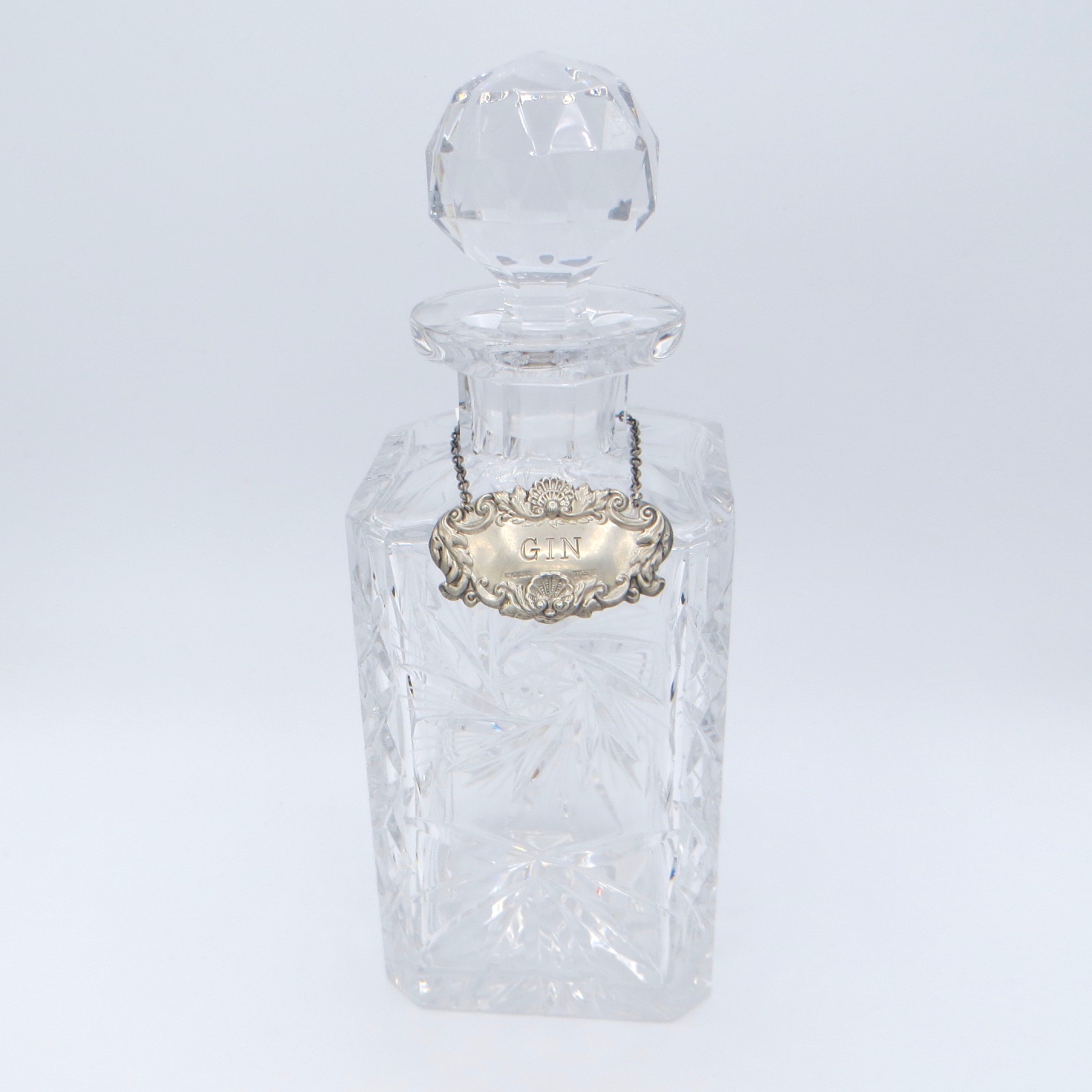
A cut crystal pinwheel decanter with a silver gin label.
Today, I have three 19th-century decanters on a silver-plate tray – all found at antique stores or auction – and love how their faceted surfaces capture and refract candles and sunlight, something we see more and more of now (yay!) as spring approaches. I went slightly mad for one, having driven the four hours from my home in New York to an auction in New Hampshire, and spent an eye-watering $350 on it. It’s pretty spectacular, with a lot of intricate deep surface carving, but that’s a fortune for me. Have never regretted a penny!
Antiques on Queen has a fantastic array of glassware and crystal, and every time I visit I’m tempted to add to our collection.
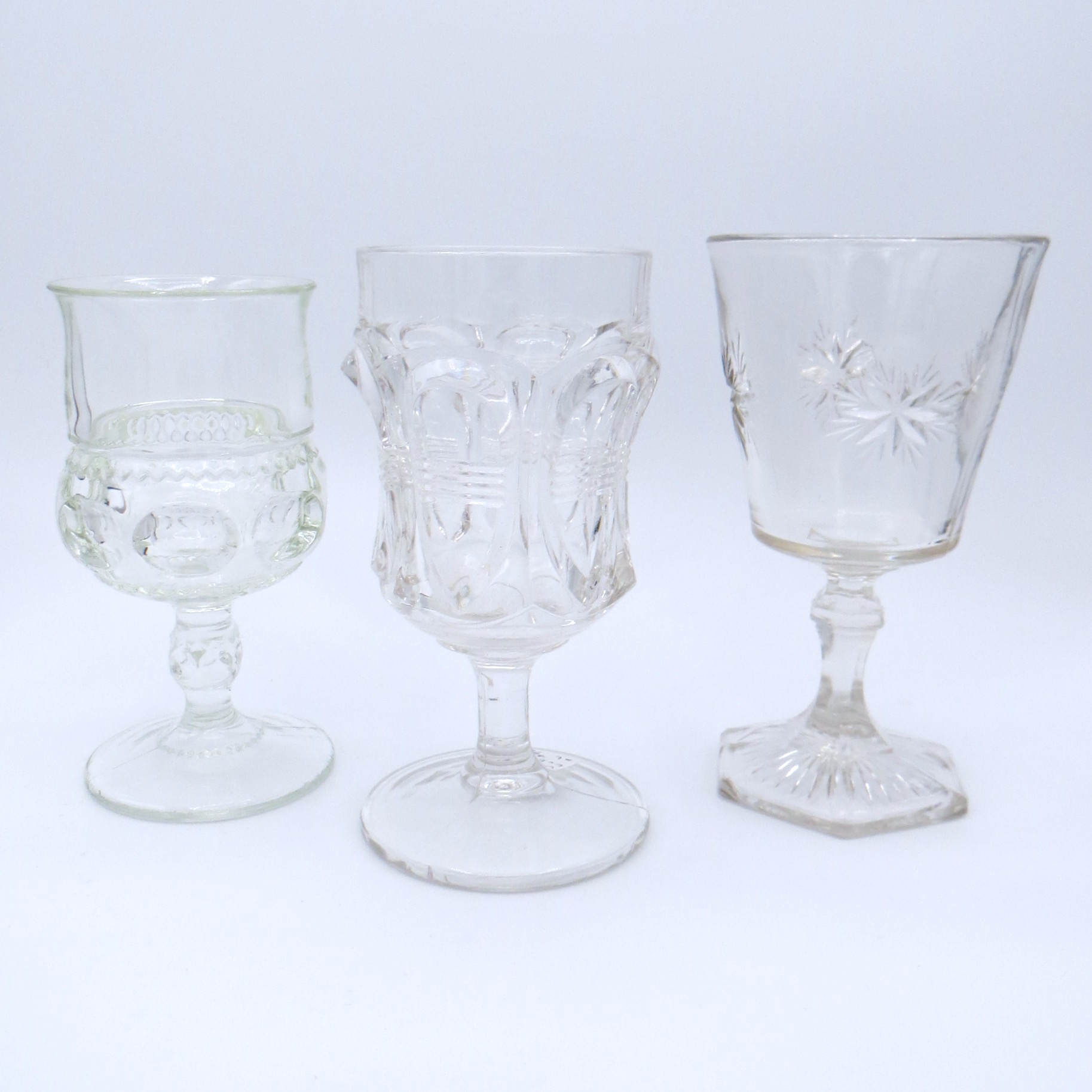
Three cut glass goblets from the 1890s. From left to right: King’s Crown, Sawtooth, and Bethlehem Star patterns.
It’s also been a rough few years for so many of us, stuck at home trying to stay safe from COVID, not able to entertain others – one of my favorite activities. So owning and enjoying and using elegant vintage stemware and goblets and decanters, and every manner of glass and crystal, is such an easy and a terrific way to add useful beauty to your home.
While it’s less likely to find such early examples, glass has been made since the 15th century BC in Crete, Western Asia and Egypt; in 100 AD glassblowers in Alexandria, Egypt discovered that adding manganese dioxide create clear glass, and it became used not only for tableware but windows.
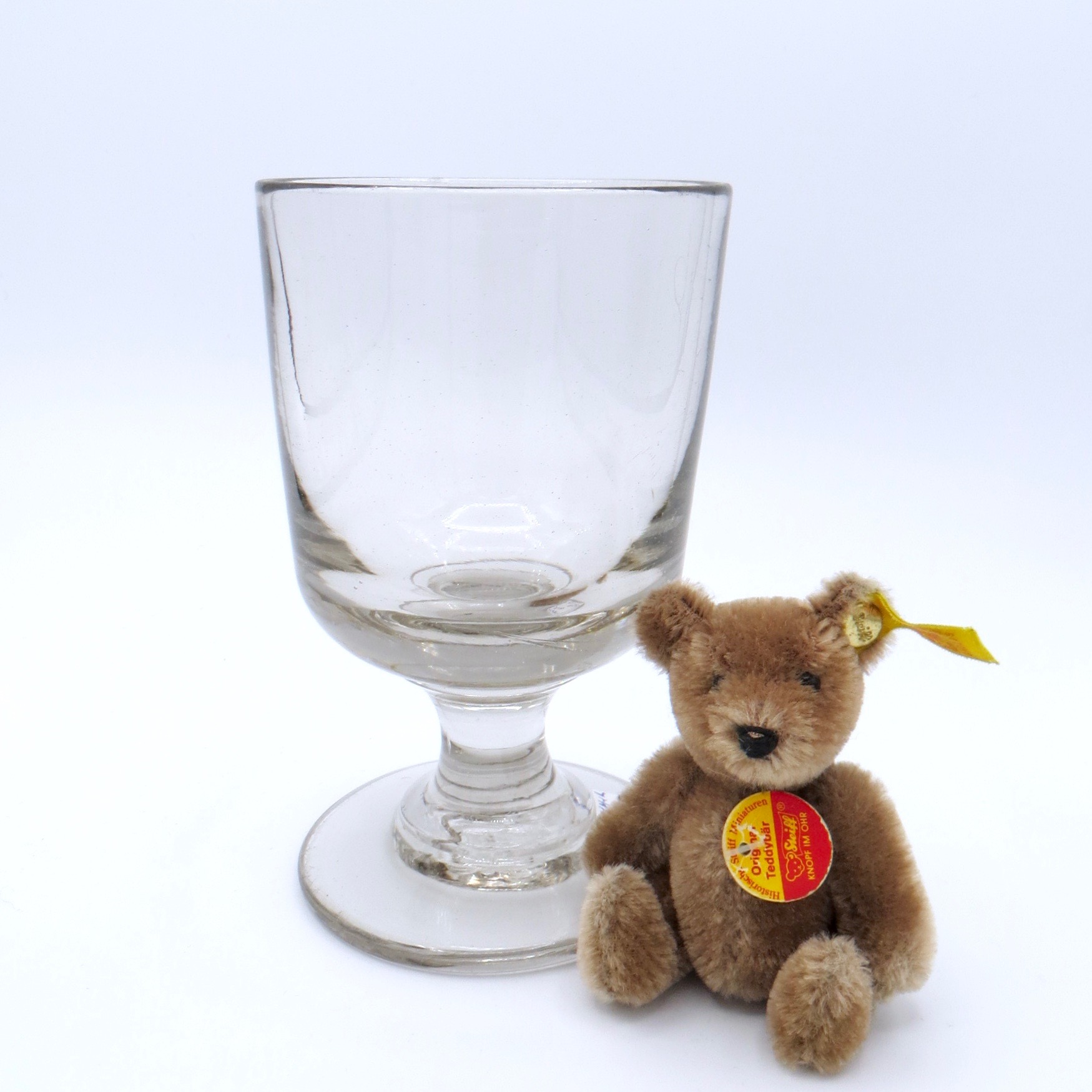
Rummer c.1840; Teddy is included for scale, to show the large size of the glass.
Goblets have a delicious sort of heft and weight to them and come in many patterns. I love rummers – originally called Roemers and made between the 15th and 17th century in Germany, with studded bits added to the handle so greasy fingers wouldn’t drop it. Later, the name was used more generically and less accurately for a plain sort of goblet.
I love adding colored glass to a pretty table, and once scored four deep red wine glasses for $10 from our local thrift store. There’s a veritable rainbow out there, from early examples to mid-century and beyond.
But – hmmm – historically speaking, looks like we drink a lot more than we used to, thanks to the size of the glasses we now use.
From The Armchair Sommelier:
In the 1700s, the average wine glass held about 2.2 ounces of wine. Today, the average wine glass holds about 15.2 ounces. The standard pour (or serving) of wine is 6 ounces, so today’s glasses hold more than two servings each.
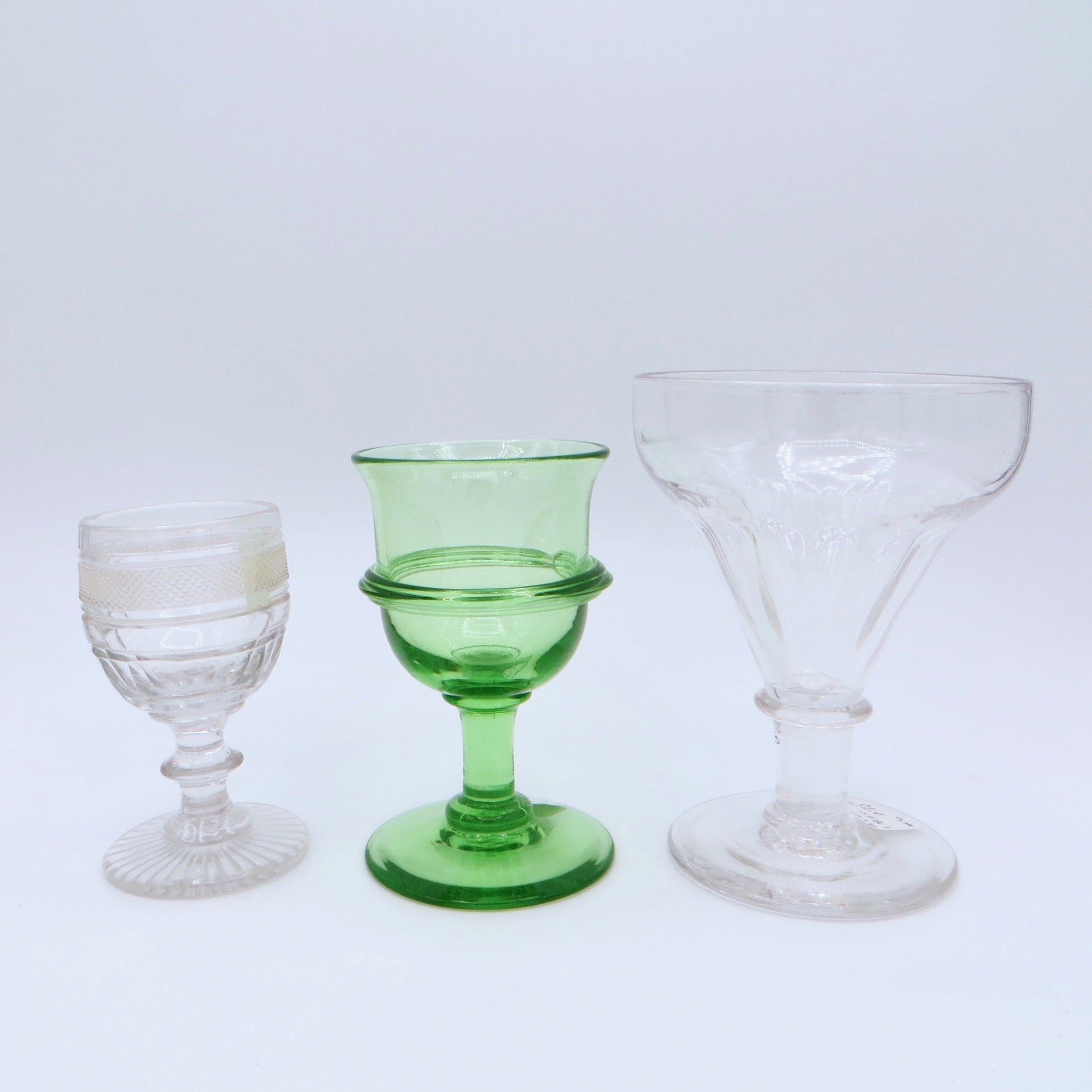
Three glasses, different sizes and ages. Left to right: English c.1810; early green glass; large glass c.1820
There’s no need to be wary of using your crystal and glass, although handwashing might always be your safest bet.
I have a small collection of older glass, like 19th or even 18th-century sherry glasses – you can always discern their age by their size, shape and the pontil mark on the bottom of the base where the glassblower broke it off when finished. Much glass and crystal was hand-blown, so that distinctive indentation is a sure mark of hand-made material. You’ll may find bubbles or swirls in the earliest pieces.
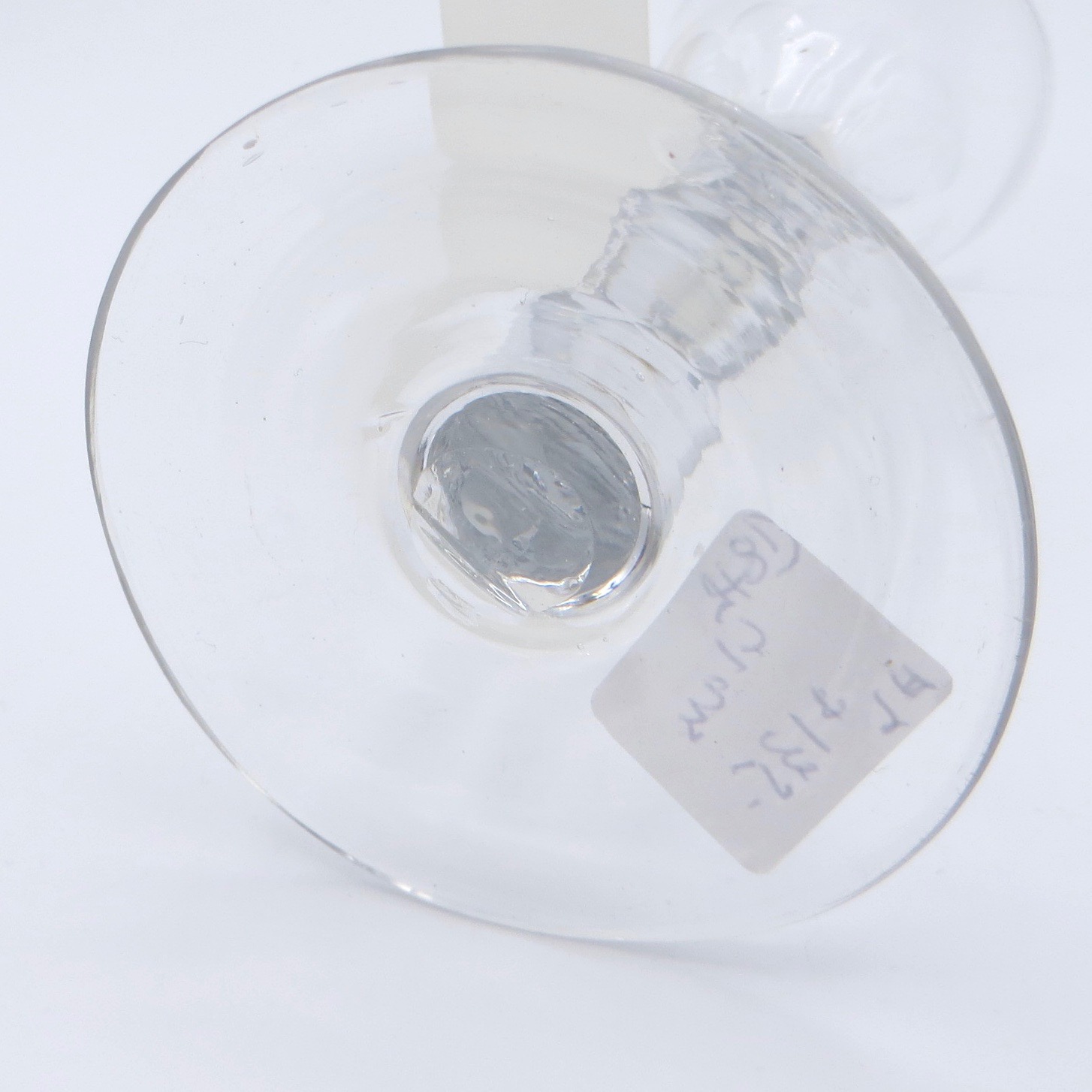

Left: The base of a glass, featuring the pontil mark. Right: An 18th century glass.
In later years, mass market glass and crystal have been made industrially and molded; the most elegant – like Moser, Baccarat, Orrefors, Lalique, Steuben and Waterford – to name only a few high-end manufacturers, have fine hand-cutting, etching, colors or gold edges and some of their four-figure prices reflect that exquisite workmanship. This glass by Moser is simply pure art, with its faceting, wide gold rim and chamfered stem – at $357 (U.S.) Whew!
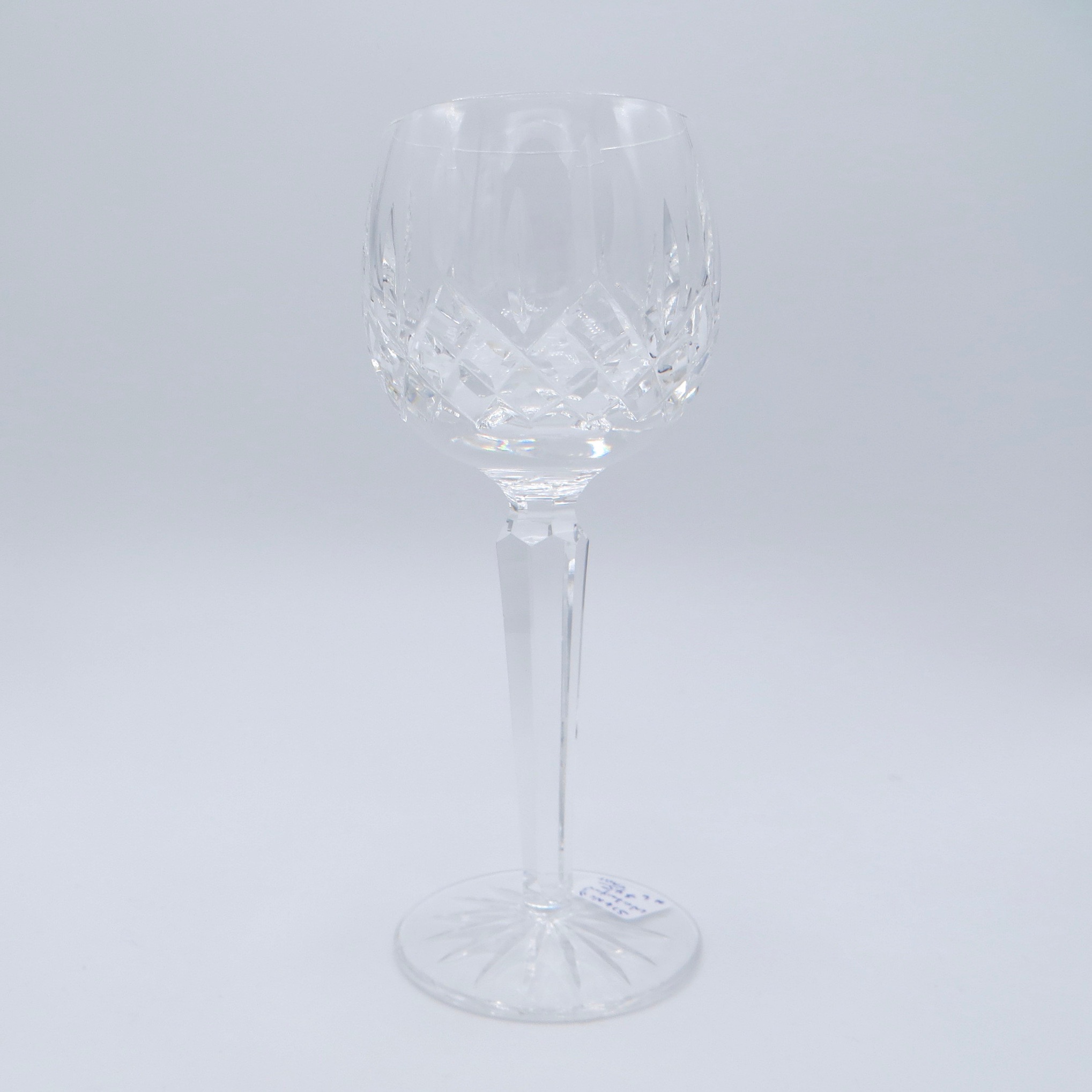
A Waterford wine glass. Waterford is typically signed, but is also distinguishable by the high quality of the crystal and the cut.
Partnering with legendary designers adds to the allure and value, like this $1,600 (U.S.) decanter by Ted Muehling.
If you love movies as much as I do, you’ll enjoy this great list of glasses and tumblers appearing stylishly and memorably in movies like Blade Runner, The Shining, Lost in Translation and The Avengers.
And if you really appreciate early glass, you must make the trek to Corning, NY, to the Corning Glass Museum, which has a huge and truly astounding collection. I visited it decades ago and still remember its astonishingly intricate Roman cage cup. It is likely the world’s largest collection, covering 3,500 years of glassmaking.
